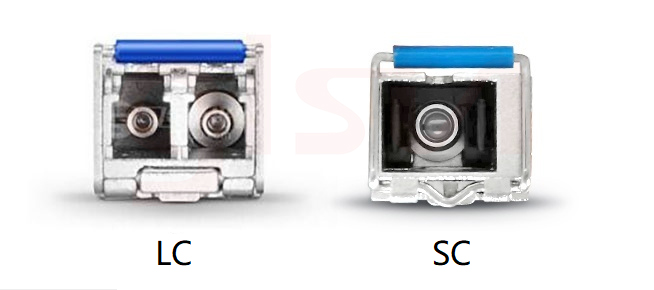Fiber Optic Tech
What Should We Know When Buying Transceiver Modules?
When buying an optical transceiver module, not only the price and quality must be considered, but also the stability and reliability, and whether it can meet the requirements of network equipment compatibility and data transmission.
Interface Rate
When selecting the interface rate of optical transceiver module, it is necessary to confirm the rate supported by the switch, and then the rate of the optical transceiver module according to the rate supported by the switch. The rate of the optical transceiver module usually includes FE (155M), GE (1.25G), 10GE, 25GE, 40GE, 100GE, 400GE. In addition, fiber channel 8G and 16G rates are commonly used in storage networks (SAN).
Transmission Distance
Optical transceiver modules with different rates/wavelengths/packages support different transmission distances, so it is very important to determine the transmission distance. For example, the transmission distance of SFP-10G-SR 10G multi-mode optical transceiver module can only be up to 300m, and the SFP-10G-ZR 10G single-mode optical module can be up to 80km.
The luminous size of optical modules with different distance specifications is different. It should be noted that the transmission optical power of long-distance optical transceiver modules is generally larger than the over"" optical power. Therefore, it is necessary to pay attention to the length of the fiber to ensure that the actual received optical power is lower than the over"" optical power. If the fiber length is too short, long-distance optical transceiver modules need to be used in conjunction with optical fiber attenuation (attenuation value in dB/km) to avoid burning out the opposite-end optical transceiver module.
Fiber Type
There are single-mode and multi-mode fiber types. The center wavelengths of single-mode optical transceiver modules are generally 1310nm and 1550nm, supporting the use of single-mode optical fibers. Single-mode optical fiber has wide transmission frequency and large transmission capacity, and is suitable for long-distance transmission. The central wavelength of the multimode optical transceiver module is generally 850nm, and it is used with the multimode optical fiber. Multimode fiber has the modal dispersion defects, and its transmission performance is worse than that of single-mode fiber, but its cost is low, and it is suitable for small capacity and short-distance transmission.
Fiber Interface
Common used interfaces include LC, SC, ST, MPO, etc., but it needs to consider the cost of the project and its future upgrades and expansions comprehensively. For example, 40G QSFP+ multi-mode is generally MPO interface. Using MPO patch cables, the cost of optical transceiver modules is low, but the cost of laying a large number of MPO patch cords is relatively high. 40G QSFP+ also has LC interface, using LC patch cables, the laying cost of fiber optic cables is lower. So this is a question that needs to be combined with the actual situation for comprehensive decision-making. In addition, the optical fiber interfaces of different optical transceiver modules are different, so we need to know the optical fiber interface corresponding to the optical module to purchase the applicable fiber optic cables. For example, 1.25G BiDi single-fiber optical transceiver has LC and SC interface types, so it needs to be confirmed with the manufacturer before purchasing.

Working Temperature
The working temperature range of the optical transceiver module includes commercial temperature (0℃-70℃), extended temperature (-20℃-85℃), and industrial temperature (-40℃-85℃). Optical transceiver modules with the same package, rate, and transmission distance usually works in commercial temperature and industrial temperature. Industrial temperature transceiver modules are with better temperature tolerance, so the price of industrial temperature transceiver modules is higher. We need to the operating temperature level of the optical module according to the actual use environment.
Compatibility
The optical transceiver modules cannot be mixed on devices of different brands. We need to explain to sales person what devices the optical transceiver module will be used on before purchasing, so as to avoid the problem of incompatible devices in the optical transceiver module.
Price
Generally, the price of origin brand transceiver modules are high. The performance and quality of third-party compatible optical transceiver modules can be said to be the same as origin brand’s, but its price is more lower.
Quality and After-sales Service
The optical transceiver module will not have any problems in the first year of use, so try to buy from the manufacturer with stable quality.



















